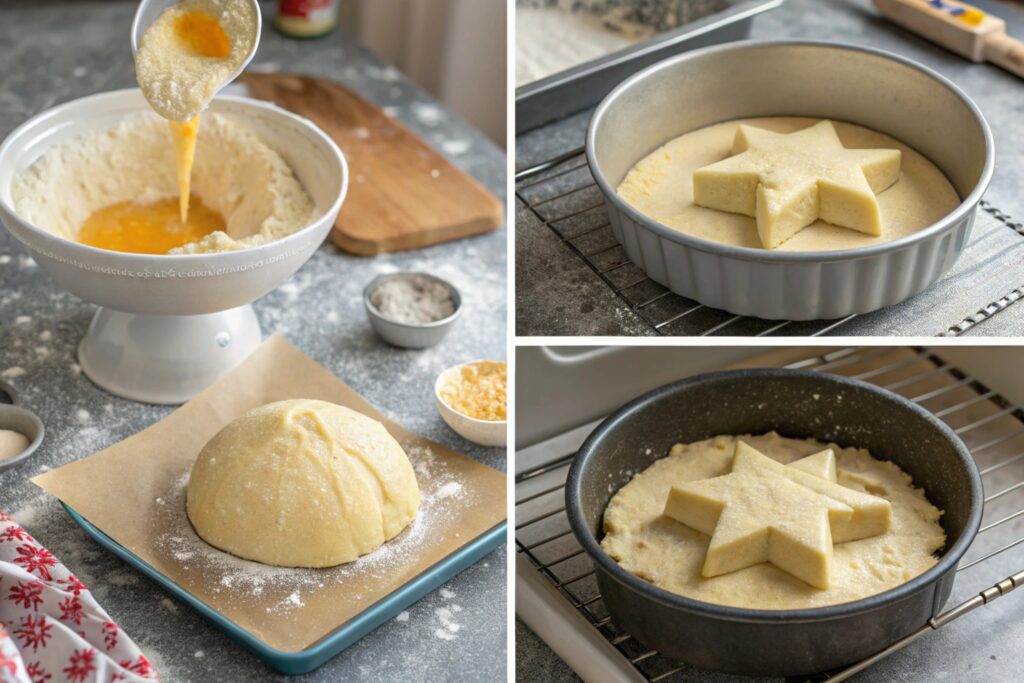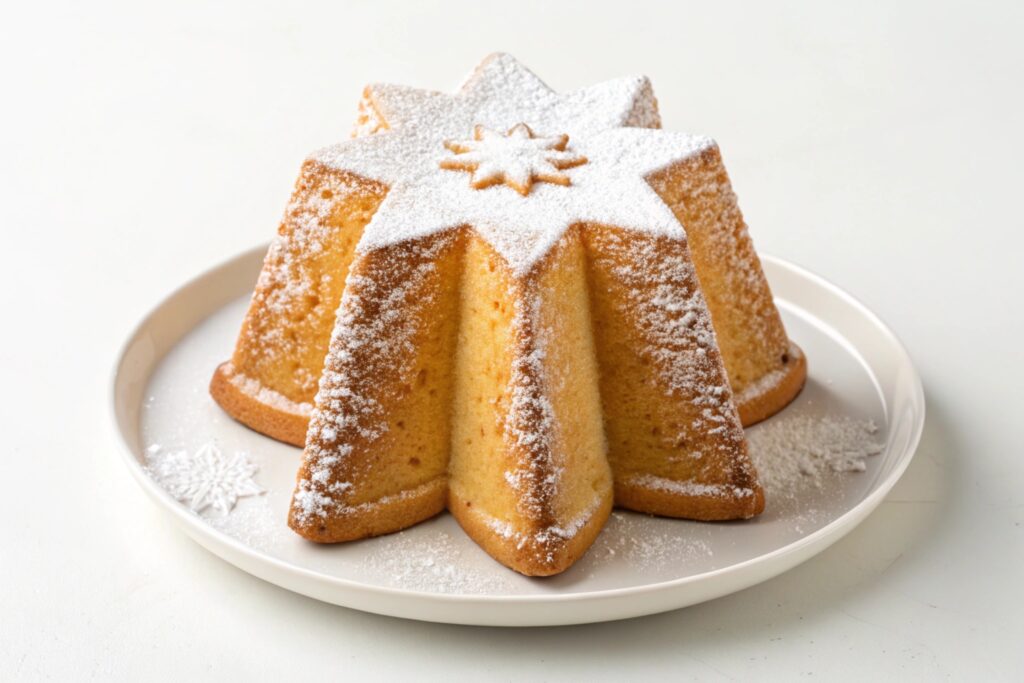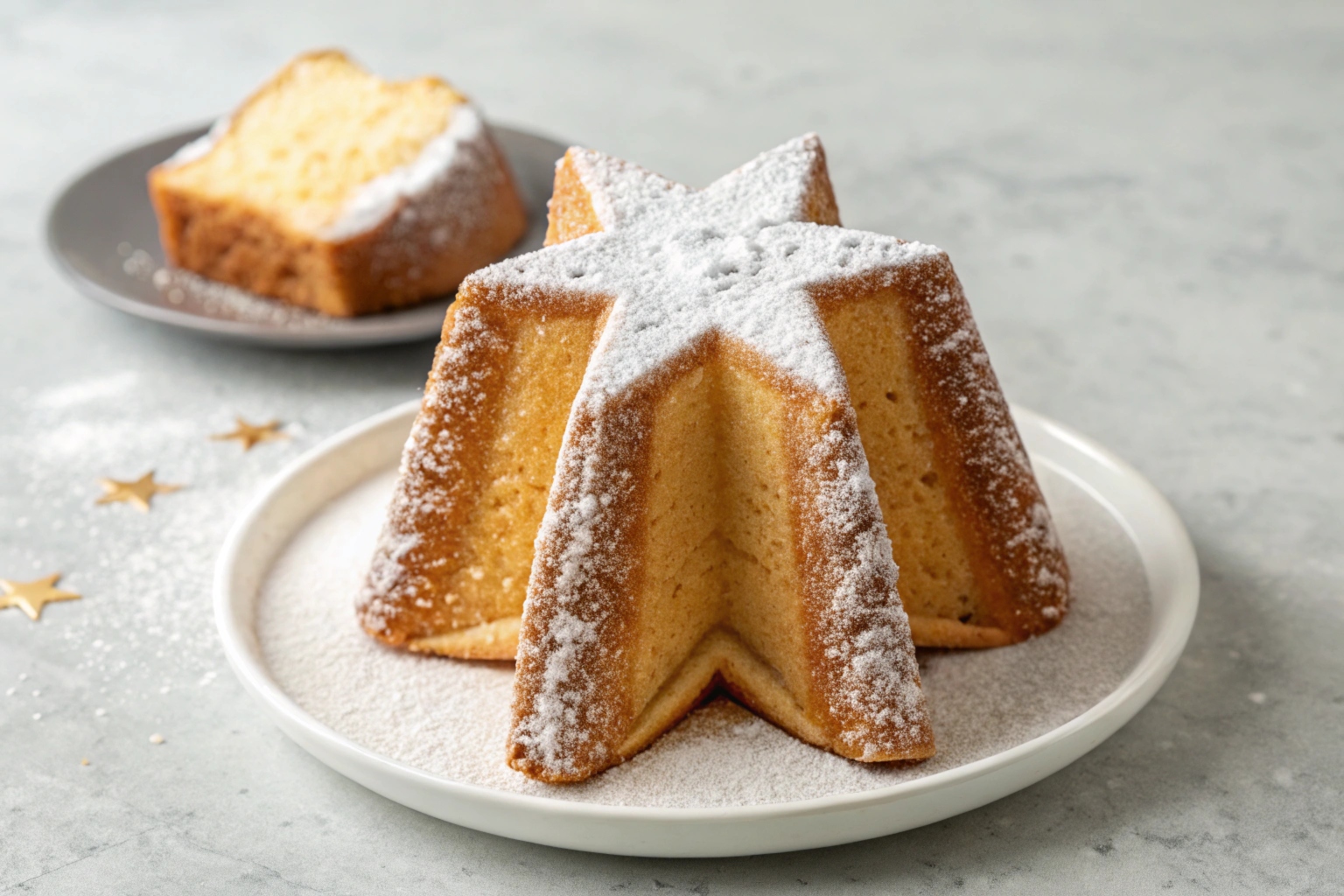Pandoro, the golden bread of Italy, holds a special place in holiday traditions, especially during Christmas. This iconic sweet bread, with its soft dough and dusting of powdered sugar, has been a beloved symbol of celebration for generations. But how did this delightful pastry come to be, and what makes it so irresistible? In this article, we’ll explore the history, ingredients, preparation, and serving techniques of Pandoro, while also offering storage tips, avoiding common mistakes, and exploring creative variations. By the end, you’ll have a comprehensive understanding of why Pandoro continues to be a staple on holiday tables worldwide.
History of Pandoro
The story of Pandoro dates back to the Italian Renaissance, originating in Verona, a city famed for its rich culinary culture. While sweet bread variations were enjoyed throughout history, Pandoro, as we know it today, first appeared in the late 18th century. Its name, which translates to “golden bread,” reflects both its rich golden color and its luxurious reputation.
Initially, Pandoro was reserved for the wealthy, as its ingredients, like butter, eggs, and sugar, were expensive and hard to come by. Over time, advances in baking techniques and ingredient availability made it more accessible, and it soon became a Christmas essential across Italy. In 1894, pastry chef Domenico Melegatti patented the original recipe for Pandoro, ensuring its place in culinary history. Today, this beautifully star-shaped bread remains a symbol of celebration, embodying the joy of holidays and special occasions.
Ingredients
The magic of Pandoro lies in its simple yet high-quality ingredients. Each component contributes to its smooth texture, sweet flavor, and golden appearance.
Flour
The base of Pandoro is high-quality all-purpose flour. It provides structure and elasticity, ensuring the soft dough develops perfectly during kneading. Excess flour should always be avoided when dusting to maintain the delicate texture.
Butter
Unsalted butter is essential to achieving the rich flavor and soft, melt-in-your-mouth crumb. Some recipes may even include cocoa butter for additional depth and smoothness.
Sugar
Granulated sugar sweetens the dough and contributes to the bread’s beautiful golden brown hue during baking. Powdered sugar, or icing sugar, is used as a final dusting, giving Pandoro its snow-like appearance.
Eggs
Egg yolks provide moisture, flavor, and the golden color that makes Pandoro so recognizable. They also enrich the dough, enhancing its soft texture.
Other essential ingredients include fresh yeast or instant yeast, lukewarm water or warm water to activate the yeast, and a hint of lemon zest and vanilla pod for aroma and flavor.
Preparation Method

Making homemade Pandoro is a labor of love, requiring patience and precision. The process is broken into key steps: leavening, dough preparation, and shaping.
Leavening Techniques
The success of Pandoro lies in its airy, fluffy texture. To achieve this, proper leavening techniques are critical. A pre-dough, also known as a sponge or starter, is created using yeast, water, and flour. This mixture ferments over several hours, activating the yeast and developing flavor.
Fresh yeast or dry yeast works well, though instant yeast is a quicker alternative. The pre-dough is then incorporated into the main dough ingredients during the mixing process.
Creating the Dough
Once the pre-dough is ready, the main dough is prepared by gradually adding flour, sugar, egg yolk, and softened unsalted butter. Using a dough hook attachment on a stand mixer is ideal for achieving the desired smooth dough consistency.
- Combine pre-dough, flour, and sugar.
- Add eggs one at a time while mixing on low speed.
- Gradually incorporate softened butter and continue mixing on medium speed.
- Knead the dough until smooth and elastic. A dough ball should form and pull away cleanly from the sides of the bowl.
Folding and Shaping
After the dough has risen, the folding and shaping process begins. The dough is gently folded to incorporate air, which creates the soft and fluffy texture Pandoro is known for.
- Flatten the dough slightly and fold it inwards.
- Place the dough into a star-shaped mold, ensuring it is evenly distributed.
- Allow the dough to rise slowly until it doubles in size. This slow leavening enhances both flavor and texture.
Finally, bake the Pandoro at a consistent temperature until it turns golden brown. A wire rack is perfect for cooling the bread after baking.
The Texture and Flavor Profile
The hallmark of Pandoro is its soft, buttery texture and light, airy crumb. Unlike dense sweet bread, Pandoro has a delicate structure achieved through careful kneading and leavening. The flavor is rich and subtly sweet, with notes of vanilla and lemon zest enhancing its appeal. The golden exterior, paired with a dusting of powdered sugar, makes it visually stunning and irresistibly festive.
Traditional Serving Suggestions
Pandoro is best enjoyed as part of a festive spread. Here are some traditional serving ideas to make the most of this classic dessert:
Dusting with Powdered Sugar

The signature touch for any Pandoro is a generous dusting of powdered sugar. Place the bread in a large plastic bag, add icing sugar, and gently shake until the bread is fully coated. This creates a snowy effect that’s perfect for the holiday season.
Pairing with Toppings and Sauces
While Pandoro is delicious on its own, pairing it with toppings and sauces can elevate the experience:
- Whipped Cream: Light and airy, it complements the soft dough beautifully.
- Chocolate Sauce: A rich drizzle of melted chocolate or cocoa butter-based sauce adds indulgence.
- Fruit Compote: Fresh or preserved berries bring a tangy contrast to the sweet bread.
- Custard: Vanilla custard adds creaminess and enhances the Pandoro’s flavor profile.
Storage Tips for Pandoro
To keep your Pandoro fresh and soft, follow these storage tips:
- Wrap the Pandoro tightly in plastic wrap to prevent it from drying out.
- Store it in an airtight container at room temperature for up to 5 days.
- Avoid refrigeration, as it can harden the bread and alter its texture.
- For longer storage, freeze the Pandoro by wrapping it in plastic wrap and then aluminum foil. Thaw at room temperature before serving.
Common Mistakes to Avoid
Making Pandoro requires attention to detail. Avoid these common mistakes for perfect results:
- Skipping the Pre-Dough: Rushing the process can result in a dense bread. Allow time for proper leavening.
- Over-Flouring the Dough: Adding excess flour during kneading can toughen the dough.
- Incorrect Shaping: Ensure the dough is evenly placed in the mold to achieve a perfect star shape.
- Over-Baking: Bake until golden brown; over-baking will dry out the bread.
Variations of Pandoro
While the classic Pandoro recipe is timeless, creative variations can add new flavors and textures:
- Chocolate Pandoro: Incorporate cocoa powder or chocolate chips for a rich twist.
- Lemon Pandoro: Add extra lemon zest for a fresh, citrusy flavor.
- Stuffed Pandoro: Fill the bread with whipped cream, pastry cream, or Nutella for added indulgence.
- Puff Pastry Pandoro: Use layers of puff pastry dough to create a unique, flaky version of the classic.
If you enjoy creative twists, you might also like this kolache recipe, another delightful variation on classic baked goods.
Conclusion: The Importance of Pandoro in Holiday Traditions
Pandoro is more than just a sweet bread; it’s a symbol of warmth, tradition, and celebration. Its rich history, luxurious ingredients, and unmistakable golden appearance make it a beloved centerpiece on holiday tables across Italy and beyond. Whether enjoyed plain, dusted with powdered sugar, or paired with delicious toppings, Pandoro continues to bring families together, embodying the joy and sweetness of the holiday season.
By understanding its origins, mastering the preparation method, and experimenting with variations, you can truly appreciate the artistry and effort behind this iconic dessert. So this holiday season, share the gift of Pandoro and create cherished memories with loved ones.
Explore more festive recipes on Recipes Focus to complete your holiday menu and make this season truly unforgettable.

